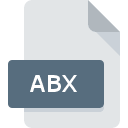.$ER File Extension

GroupWise Database
| Developer | N/A |
| Popularity | |
| Category | Database Files |
| Format | .$ER |
| Cross Platform | Update Soon |
What is an $ER file?
In the digital realm, file extensions are the gateway to understanding a file’s format and purpose. One such enigma is the .$ER file extension.
This article aims to demystify this extension by exploring its origin, history, structure, technical specifications, conversion methods, and compatibility across different operating systems.
More Information.
Initially, the .$ER file extension likely served a specific purpose within its respective ecosystem.
It might have been associated with proprietary software or a particular file format tailored to meet the needs of a specific industry or use case. Over time, its usage may have evolved or expanded to accommodate new functionalities or requirements.
Origin Of This File.
The .$ER file extension traces its roots to the early days of computing when file extensions were primarily used to denote the format of a file.
The exact origin of this extension is somewhat obscure, with no definitive source pinpointing its creation. However, it is believed to have emerged in tandem with the development of specific software applications or systems.
File Structure Technical Specification.
Understanding the structure and technical specifications of the .$ER file extension is crucial for effectively interacting with files bearing this extension.
While the specifics may vary depending on its associated software or system, .$ER files typically adhere to certain conventions regarding data organization, encoding, and metadata storage.
How to Convert the File?
Converting a .$ER file to a different format can be essential for compatibility or accessibility purposes. Here’s a step-by-step guide on how to convert .$ER files:
- Identify Conversion Needs: Determine the specific format to which you need to convert the .$ER file. This could be a common format like PDF, DOCX, or CSV, depending on your requirements.
- Explore Conversion Tools: Research available tools or software applications capable of converting .$ER files to your desired format. Look for reputable converters with positive user reviews to ensure reliability and accuracy.
- Select a Conversion Method: Choose the most suitable conversion method based on your preferences and technical capabilities. Options include online conversion websites, standalone software applications, or programming scripts for batch conversions.
- Upload or Input the .$ER File: Follow the instructions provided by your chosen conversion tool to upload or input the .$ER file for conversion. Some tools may support drag-and-drop functionality, while others require manual file selection.
- Configure Conversion Settings: Depending on the conversion tool, you may have the option to customize conversion settings such as output quality, file compression, or formatting preferences. Adjust these settings according to your needs.
- Initiate the Conversion Process: Once you’ve configured the settings, initiate the conversion process. This may involve clicking a “Convert” button or executing a command within the software application or script.
- Wait for Conversion Completion: Depending on the size and complexity of the .$ER file, the conversion process may take some time to complete. Be patient and allow the tool to finish processing the file.
- Download the Converted File: Once the conversion is finished, download the converted file to your local system. Ensure that the converted file retains its integrity and accurately reflects the content of the original .$ER file.
- Verify Conversion Accuracy: Before proceeding further, verify the accuracy and completeness of the converted file. Check for any formatting errors, data loss, or discrepancies between the original and converted versions.
- Save and Backup: After confirming the accuracy of the converted file, save it to a secure location on your system and consider creating backups for future reference or archival purposes.
By following these steps, you can successfully convert .$ER files to different formats, ensuring compatibility and usability across various platforms and applications.
Advantages And Disadvantages.
Like any file format, the .$ER extension comes with its own set of advantages and disadvantages. Its proprietary nature may offer enhanced functionality or compatibility within a specific environment.
This exclusivity can also pose challenges when attempting to share or access .$ER files across different platforms or software applications.
How to Open $ER?
Open In Windows
- Use compatible software applications designed to open .$ER files. Look for third-party programs available for Windows that support the .$ER file format.
- If no native applications are available, consider using universal file viewers or text editors capable of handling various file formats.
Open In Linux
- On Linux systems, rely on software applications or tools compatible with the .$ER file format. Look for open-source solutions or community-developed software available through package managers.
- Command-line utilities or scripting languages may also provide options for viewing or processing .$ER files on Linux distributions.
Open In MAC
- Similar to Windows, search for software applications compatible with MacOS that can open .$ER files. Explore third-party options or universal file viewers from the App Store.
- Alternatively, utilize text editors or viewers with broad format support to access the contents of .$ER files on MacOS.













